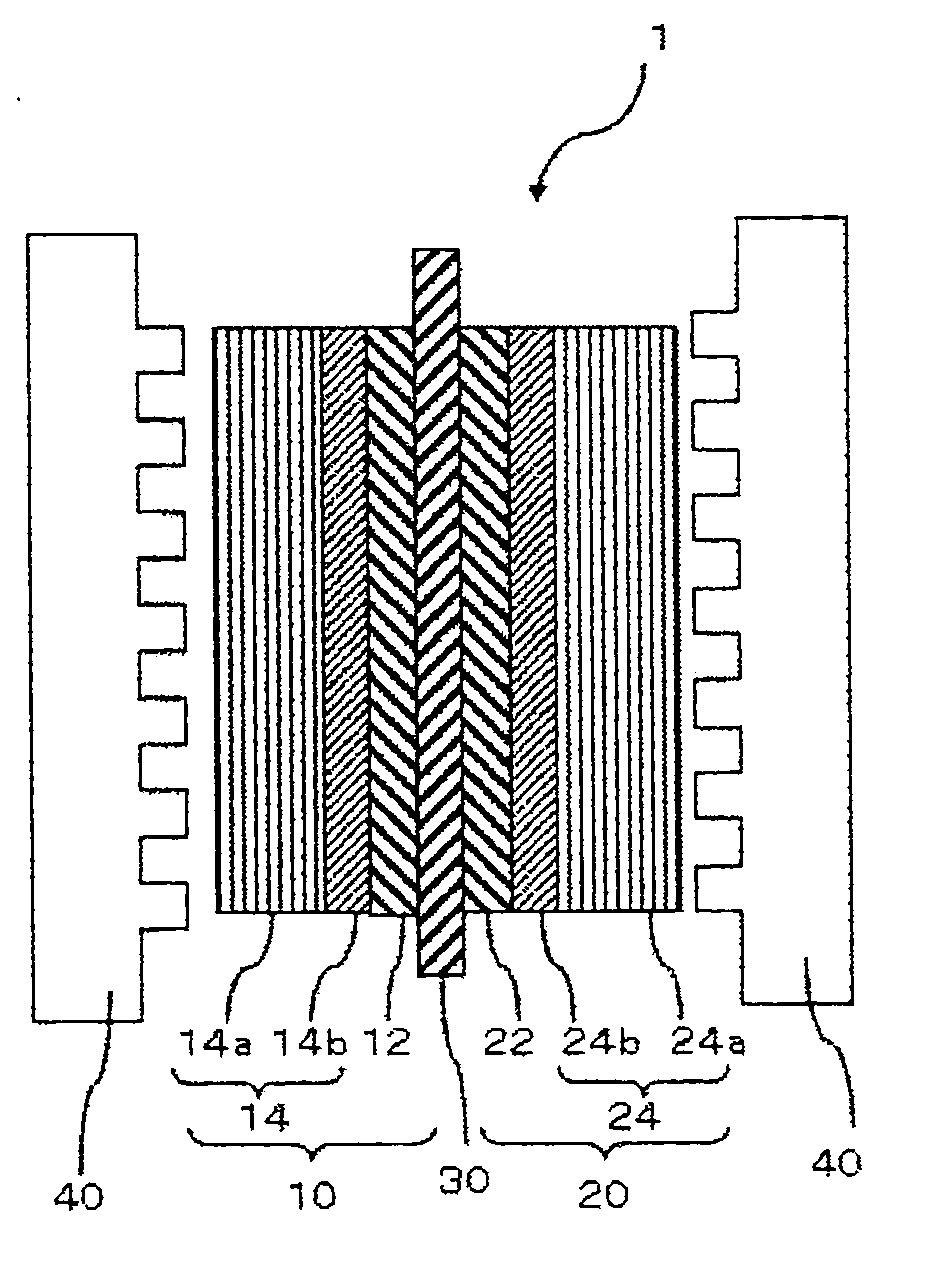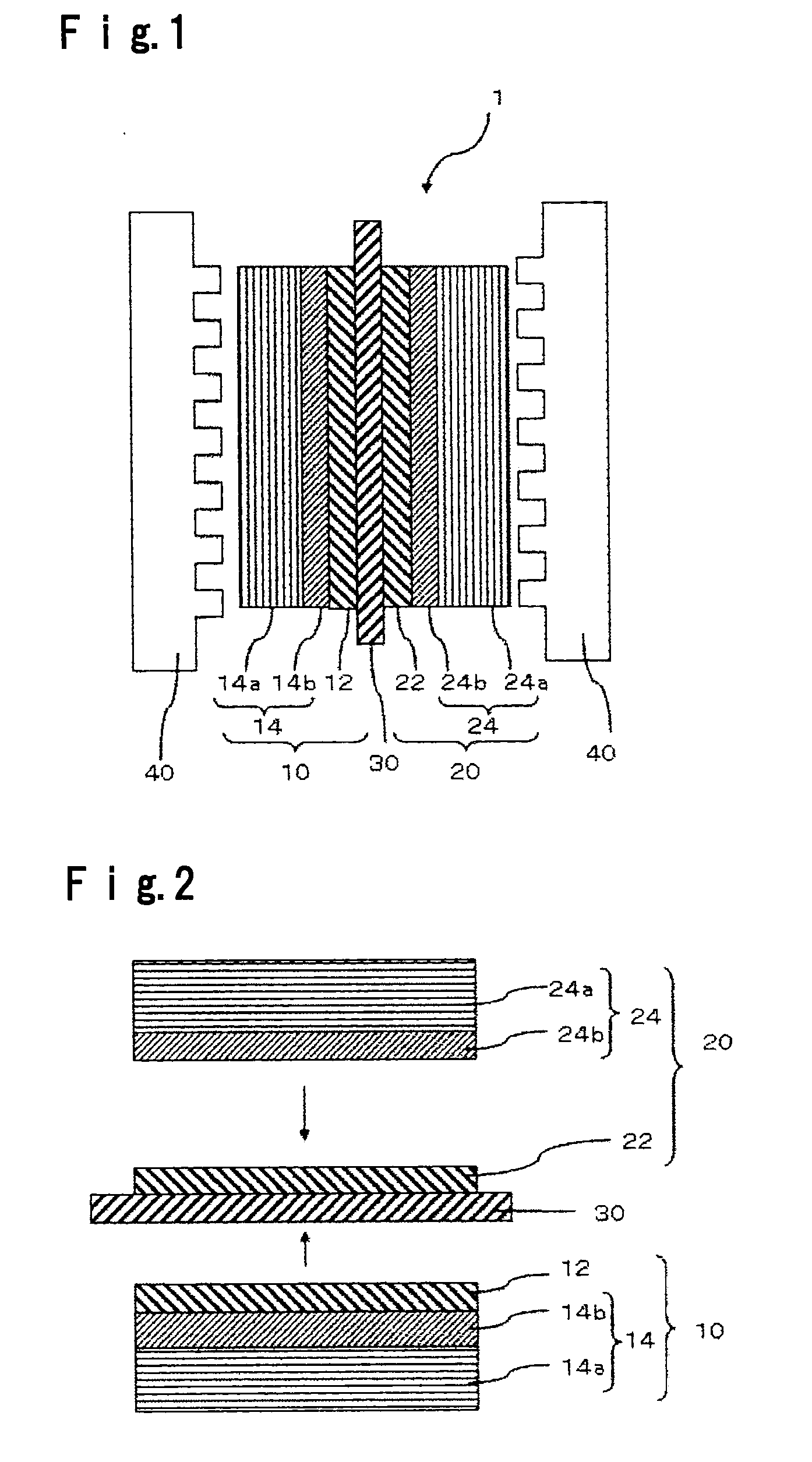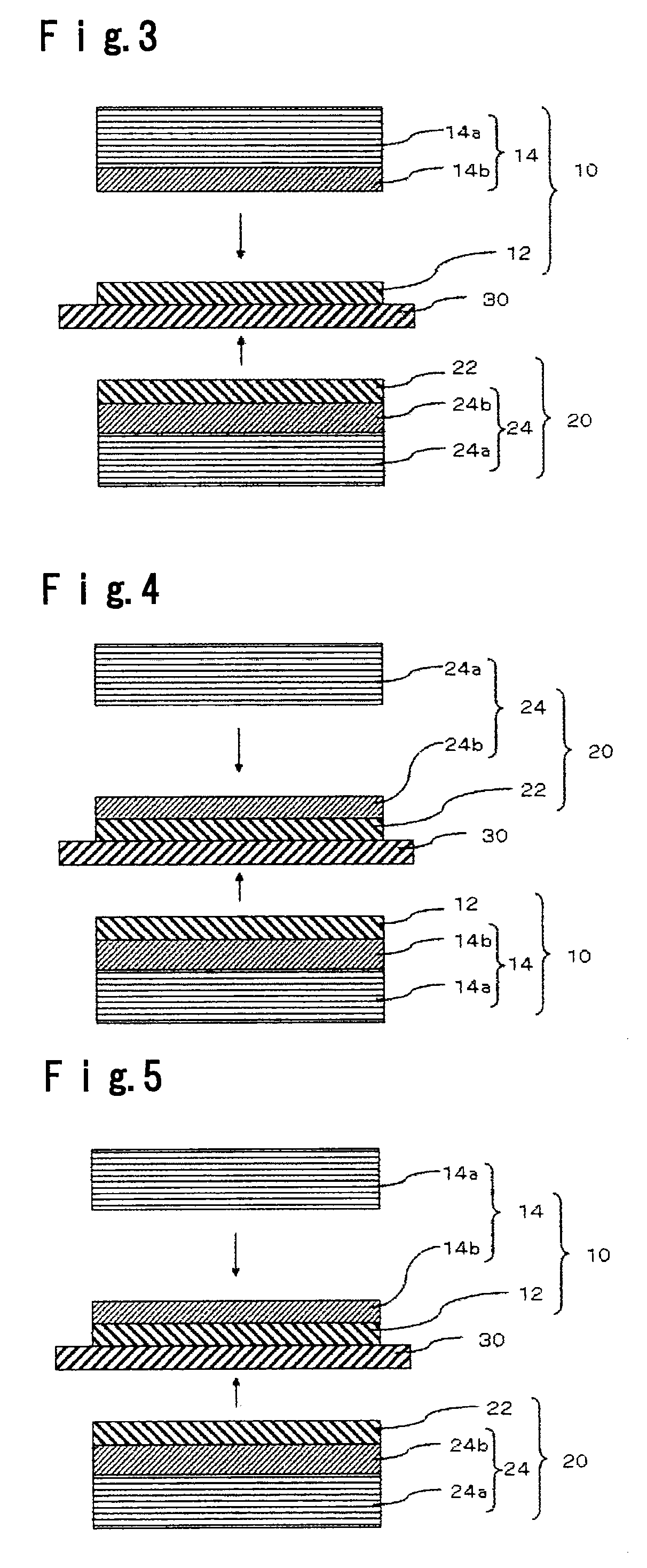Process for producing membrane/electrode assembly for polymer electrolyte fuel cell
- Summary
- Abstract
- Description
- Claims
- Application Information
AI Technical Summary
Benefits of technology
Problems solved by technology
Method used
Image
Examples
first embodiment
[0053]As a process for producing the membrane / electrode assembly 1 in this embodiment, a process having steps (1-1) to (1-4) is mentioned. This process is described with reference to FIG. 2.
[0054]Step (1-1): Gas diffusion layer 24-forming step
[0055]Step (1-2): Electrolyte membrane 30 with catalyst layer 22-forming step
[0056]Step (1-3): Anode 10-forming step
[0057]Step (1-4): Bonding step
[0058]Step (1-1): Gas diffusion layer 24-forming step
[0059]As the step (1-1), a step having the following steps (1-1-1) to (1-1-3) may be mentioned.
[0060]Step (1-1-1): Gas diffusion layer (1)24a-forming step
[0061]This step is a step of applying a gas diffusion layer (1)-coating fluid containing carbon fibers having a fiber diameter of from 1 μm to 50 μm and a proton conductive polymer, on a substrate, and drying it to form a gas diffusion layer (1)24a.
[0062]The carbon fibers preferably have a fiber diameter of from 2 μm to 40 μm, more preferably from 3 μm to 20 μm in order to obtain a sufficient gas ...
second embodiment
[0155]As another method for producing the membrane / electrode assembly 1, a method including steps (2-1) to (2-4) may be mentioned, and steps (2-1) to (2-4) may, specifically, be methods having the following steps.
[0156]Step (2-1): Gas diffusion layer 14-forming step[0157]Step (2-1-1): Gas diffusion layer (1)14a-forming step[0158]Step (2-1-2): Removal step[0159]Step (2-1-3): Gas diffusion layer (2)14b-forming step
[0160]or[0161]Step (2-1-4): Gas diffusion layer (2)14b-forming step[0162]Step (2-1-5): Removal step[0163]Step (2-1-6): Gas diffusion layer (1)14a-forming step
[0164]Step (2-2): Electrolyte membrane 30 with catalyst layer 12-forming step[0165]Step (2-2-1): Electrolyte membrane 30-forming step[0166]Step (2-2-2): Catalyst layer 12-forming step
[0167]Step (2-3): Cathode 20-forming step[0168]Step (2-3-1): Gas diffusion layer (1)24a-forming step[0169]Step (2-3-2): Removal step[0170]Step (2-3-3): Gas diffusion layer (2)24b-forming step[0171]Step (2-3-4): Catalyst layer 22-forming ste...
third embodiment
[0174]As another process for producing a membrane / electrode assembly 1, a process having steps (3-1) to (3-4) may be mentioned. This process will be described with reference to FIG. 4.
[0175]Step (3-1): Gas diffusion layer (1)24a-forming step
[0176]Step (3-2): Electrolyte membrane 30 with gas diffusion layer (2)24b and catalyst layer 22-forming step
[0177]Step (3-3): Anode 10-forming step
[0178]Step (3-4): Bonding step
[0179]Step (3-1): Gas diffusion layer (1)24a-forming step
[0180]Step (3-1) may, for example, be a method having steps (3-1-1) to (3-1-2).
[0181]Step (3-1-1): Gas diffusion layer (1)24a-forming step
[0182]This step is a step of applying a gas diffusion layer (1)-coating fluid containing carbon fibers having a fiber diameter of from 1 μm to 50 μm and a proton conductive polymer, on a substrate, to form a gas diffusion layer (1)24a. This step can be carried out in the same manner as step (1-1-1) of the first embodiment.
[0183]Step (3-1-2): Removal step
[0184]This step is a step of...
PUM
| Property | Measurement | Unit |
|---|---|---|
| Length | aaaaa | aaaaa |
| Length | aaaaa | aaaaa |
| Percent by mass | aaaaa | aaaaa |
Abstract
Description
Claims
Application Information
 Login to View More
Login to View More - R&D
- Intellectual Property
- Life Sciences
- Materials
- Tech Scout
- Unparalleled Data Quality
- Higher Quality Content
- 60% Fewer Hallucinations
Browse by: Latest US Patents, China's latest patents, Technical Efficacy Thesaurus, Application Domain, Technology Topic, Popular Technical Reports.
© 2025 PatSnap. All rights reserved.Legal|Privacy policy|Modern Slavery Act Transparency Statement|Sitemap|About US| Contact US: help@patsnap.com



